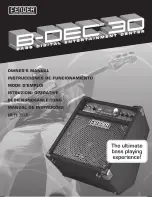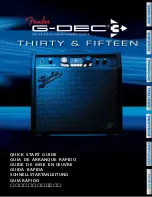
HILNA LS C021-D
User Manual
Rev –
6
Car batteries (through a cigarette lighter adaptor), laboratory DC power supplies, or wall transformers
are suitable power sources as long as the superimposed ripple is low in amplitude.
3.3
CONNECTIONS
Caution: Do not apply RF to the unit until after all cable connections are made and power has been
applied.
Making the connections from the
HILNA LS C021-D
is easily accomplished:
1.
Connect the "RF OUT" connector on the unit to a 50
Ω
coaxial cable
2.
Apply power to the unit by first plugging in the
9-pin micro-D
power cable into the DC power
input on the unit, or through the RF Output port using an external bias‐T.
3.
Connect the black lead to the positive side of the power supply and connect the
red
lead to
the
negative side of the power supply. Power is now ready to be applied to the unit.
4.
Connect the RF Source to the RF Destination with a second 50
Ω
coaxial cable.
5.
Apply RF to the input cable assembly.
Powering down the unit is done by reversing this procedure.
Connection Summary:
•
Connect the RF Output to a good load. The characteristic impedance is 50 Ω.
•
Apply DC (+
5 - 15
VDC) at the power connector, or through the RF Output port using
an
external bias‐T
(optional built-in bias-T required)
.
•
Connect an RF source to the RF Input connector.
Caution: Excess drive levels at the input to the amplifier can permanently damage
the unit. Under no circumstance should the RF Input level 20 dBm.
3.4
ENVIRONMENTAL SPECIFICATIONS
The
HILNA LS C021-D
units are rated for operation from ‐20 to +60 °C. The enclosure is
NOT
watertight
so
the unit must be kept dry. It is recommended that the unit be installed in a well‐ventilated area or
mounted to
a
heat
sink
if
the
input
voltage
exceeds
+12
VDC.
The
unit
will
run
warmer
as
the
input
voltage
increases.
3.
5
DC POWER CABLE HARNESS
The
cable
harness
that
connects
the
power
supply
to
the
9‐pin
Micro‐D
connector
of
the
HILNA
LS-
C021-D
is made up of
3
wires.
Table 6: HILNA
LS-C021-D
Interface Pin‐Out Definitions


























